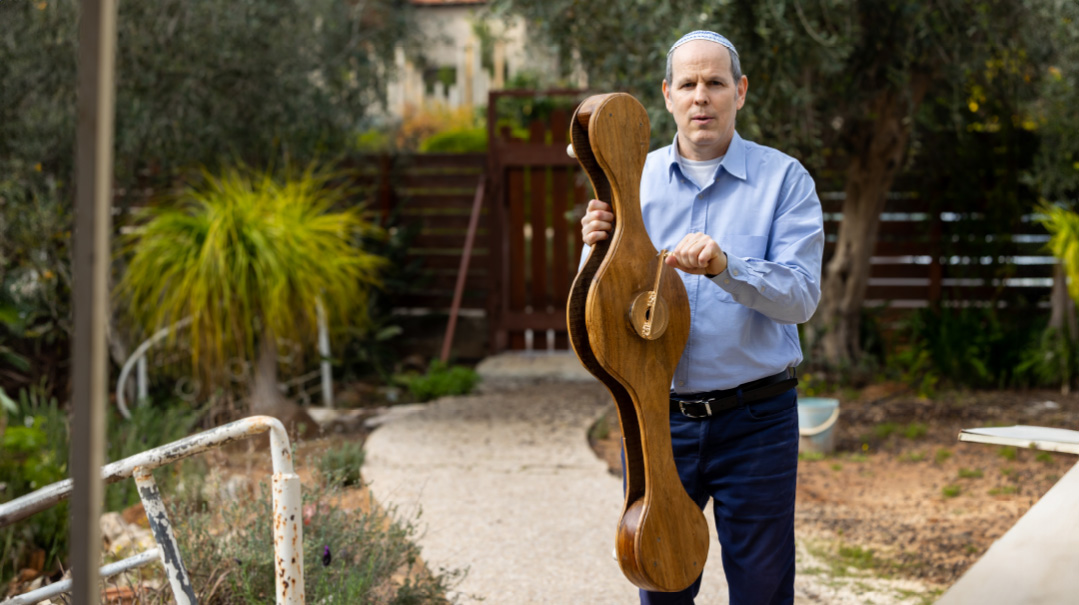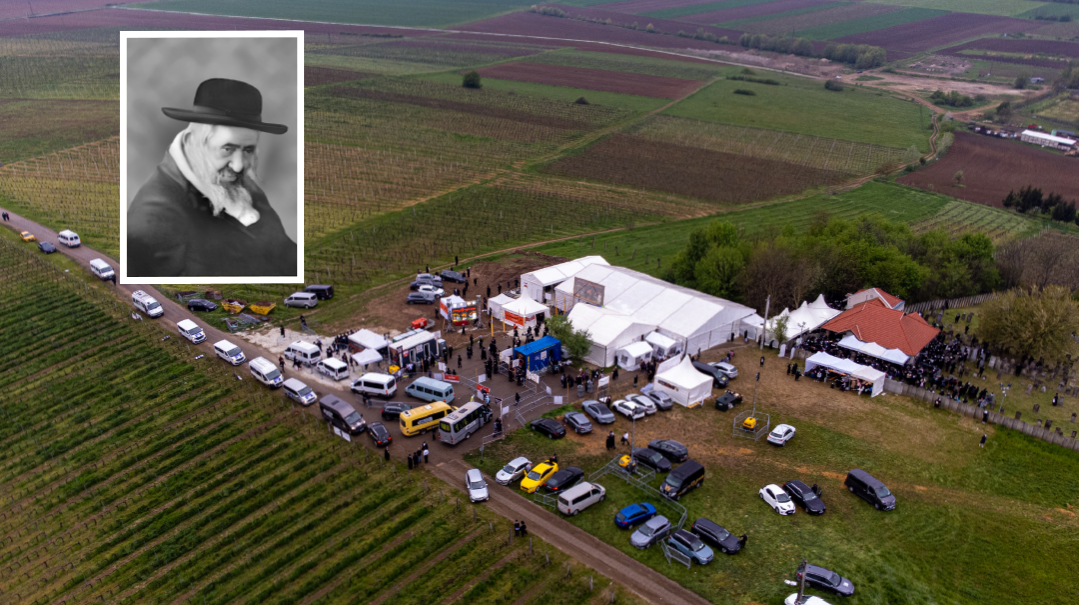Noisemakers

Today Avivi Shifris's groggers turn up for children all over — because he was once just like them

He knew little about Yiddishkeit growing up and had even less understanding of the items that so fascinated him, but that didn’t stop Avivi Shifris from creating menorahs, Kiddush cups, and candlesticks. Today his groggers turn up for children all over — because he was once just like them
I
t’s Purim night in Bnei Brak, the Megillah reading is over, and the children file into the street — to be met by a collection of massive groggers. These groggers, up to three feet tall, come in all shapes — some round with handles, designed like conventional Purim noisemakers, others in more original shapes.
The groggers are passed from hand to hand as the children discover how each one is activated with a different mechanism: One is turned by using force, another is manipulated with a small rod, and still another needs teamwork: One child holds it, while another rotates it around the shaft. Some are so heavy they need to be laid on the ground and pushed.
But where did all these groggers come from? Mispallelim who came early will tell you they saw someone put them down, asking only that they be returned after use. That’s because not too many people recognize Avivi Shifris, the multidisciplinary artist and craftsman who produces this unusual Purim fare.
And it’s not only in Bnei Brak. The groggers turn up in all sorts of places, not all of them religious. In towns and neighborhoods where children aren’t familiar with the halachos of Purim, Shifris is there, letting the children try out the groggers and explaining about the Megillah reading. He understands these kids, because he came from the same place. When he was their age, he was also thirsty for information about Judaism, and he also had no idea how to get it.
Oops! We could not locate your form.







